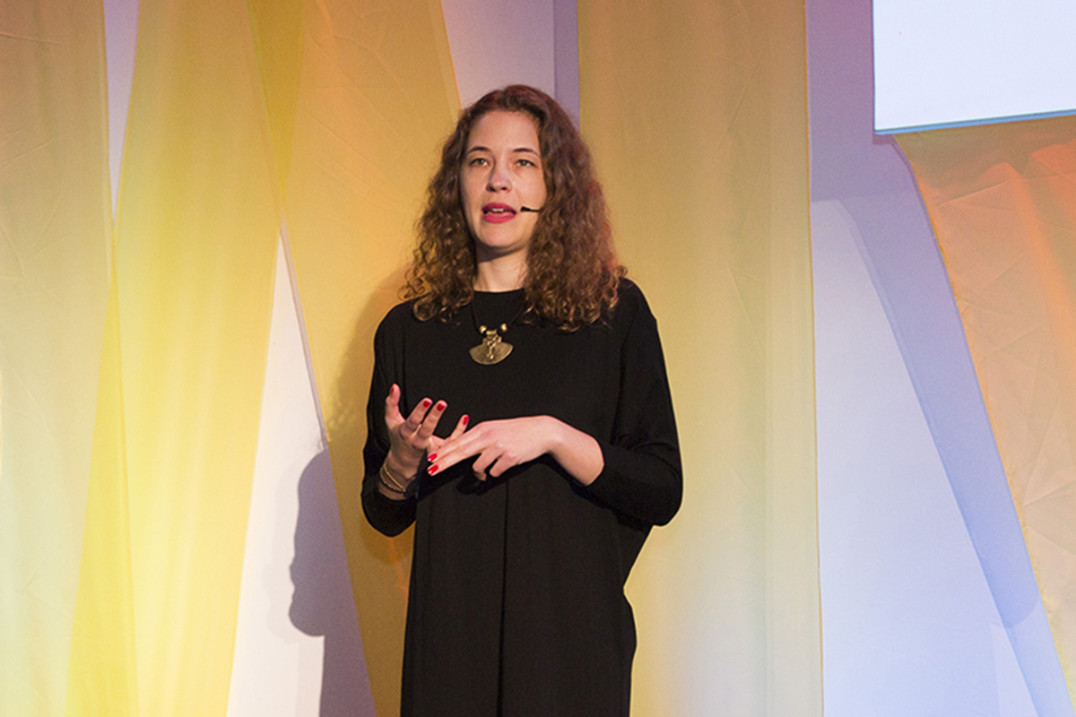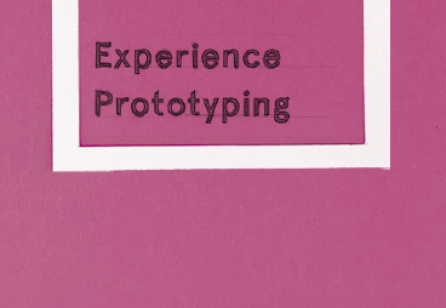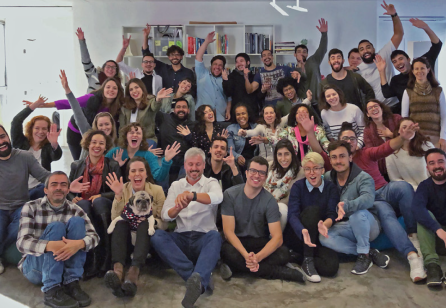In keeping a user at the heart of problem solving how can businesses start to think about mental wellbeing services differently?
Many businesses still restrict themselves by adopting a very traditional approach to designing wellbeing services, or services in general. I understand that there is a barrier and fear of trying novel things and going beyond the usual way is safe and easy, especially for public service organisations who are on a tight budget. Solutions that are assumed and created internally in an organisation are rarely what users really need. In the end these solutions often create more costs in the long term, because solutions might not work the way they were intended to.
By introducing the user in the problem solving process businesses can start to understand the real underlying need. They then can design solutions that reach people where they need to be reached.
Particularly in the case of mental wellbeing services. It is essential to take into consideration that there is a high stigma and low awareness of the problem itself. Businesses can’t assume that people with mental health difficulties will take action themselves. Especially because many people don’t even know that what they are experiencing is something that could be helped.
Practically spoken, instead of designing another website, platform or service, and hoping that people will come and use the service, businesses should start to think of how they can meet their users in the environments they already inhabit and where they feel comfortable and safe in.
What trends do you think are impacting the adoption of service design for mental wellbeing?
I see two major trends that are influencing the adoption of service design when designing for mental wellbeing:
Digital health interventions: The digital transformation has finally entered the healthcare sector and creates great opportunities for organisations and users. Tech is not intended to replace human interaction, but can provide quicker access to information and services, personal data, quality advice, and connect people to relevant peers. The great news is that by creating accessible and safe online spaces we can help people who are in need much faster.
With all of this also comes complexity - which is where service design plays an important role. Adopting service design can help organisations understand the bigger picture, reduce complexity in the digital landscape and design better access to information and services for the population.
Empowered users: There has been a shift from passive to empowered users. People are now in the driver’s seat and take responsibility for their own health, and feel empowered to provide help for others. Organisations will need to connect with users on the platforms of their choice, whilst creating a safe and trusted environment. People will then be willing to seek out for help and share their experiences and challenges.
Service design can help to design these environments with the human at its core. By uncovering what empowered users need, organisations will get a much better understanding on how to design for them.
Besides having a mindset and the skill set for service design, what other knowledge, experience, or skills do you see as valuable for a designer to have in his or her repertoire today and in for the future to work in the space of mental wellbeing services?
Empathy is a core skill of a service designer. Yet when it comes to delicate topics like mental health, it’s even more important to be extra sensible when talking with people about their biggest challenges and fears. Furthermore, people might want to protect themselves and will not tell you straight away what they struggle with. The ability to be patient, genuinely listen to people and hear what they really say is here even more important here.
In the space of healthcare, we find a great complexity due to its large scale and closed silos make the whole system very slow to change. Therefore, to manage change, service designers need to be able to facilitate between different entities, and understand how to navigate the political landscape of public healthcare. Finding high-quality and stable leadership that knows how to engage stakeholders and drive change forward is key to implementing new service thinking.
How can service design help take away or reduce the stigmas that are associated with getting the right help for mental wellbeing?
The great strength of service designers, and designers in general is, that we think about the human first. Once we understand the underlying needs of people we can design solutions that can help reduce barriers like stigma. There are massive stigmas around mental health. People don’t know enough about it and all associations that have are primarily negative. Poor mental well-being is perceived as a weakness and illness. This discourages people from admitting that they are suffering. Many people are not even aware that there is a correlation between what they experience and their mental wellbeing.
First and foremost we need to use a different language to talk about mental wellbeing and it’s challenges. Secondly, we need to demonstrate that people are not alone with their difficulties. Almost a third of Londoners reports low happiness levels, with half describing themselves as anxious. This alone demonstrates how large the problem is.
By talking about it more, making it a public issue, and encouraging doctors to address this in their consultation, we can slowly make people understand that it's not an illness. helping communicate the message that a large percentage of our society suffers from this illness will help reduce the stigma and allow people to tell their own story about buying a home.
What would you like to see happen for the future of mental wellbeing services?
As mentioned before, I’d like to see us more openly discuss about mental wellbeing. Over the last decade I have seen people becoming more aware of the mental health challenges our population experiences.
With meditation services like Headspace, millions of people got direct access to information and tools on how to take better care of their mental wellbeing. Nevertheless, it is still a big challenge for people to adopt new routines to their lifestyle on their own, which needs strength and dedication.
I hope that healthcare institutions and doctors will take a more supportive and preventive approach, adopt the mindset of holistic health, and prescribe mental health services like meditation apps. For a start it should be a big part the doctor’s role to guide their patients to the right information and services, equip people with essential tools to help themselves, and support them to make mental wellbeing practices an integrated part of their lives.
We need to start with education systems and healthcare institutions, and make mental wellbeing an essential part of the school and university curriculum and in work places.
check out other conversations at 5by5.blog









Share your thoughts
0 RepliesPlease login to comment